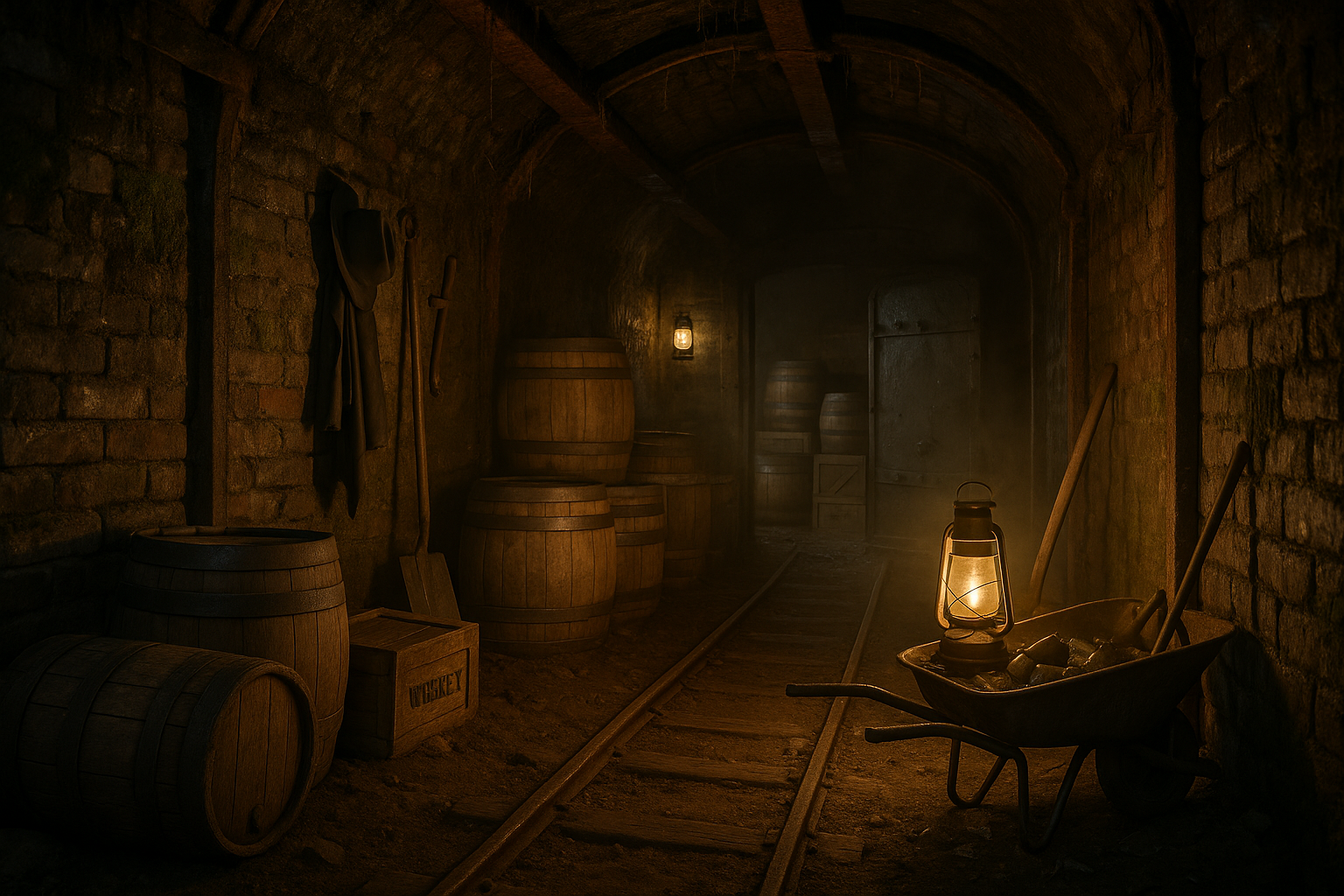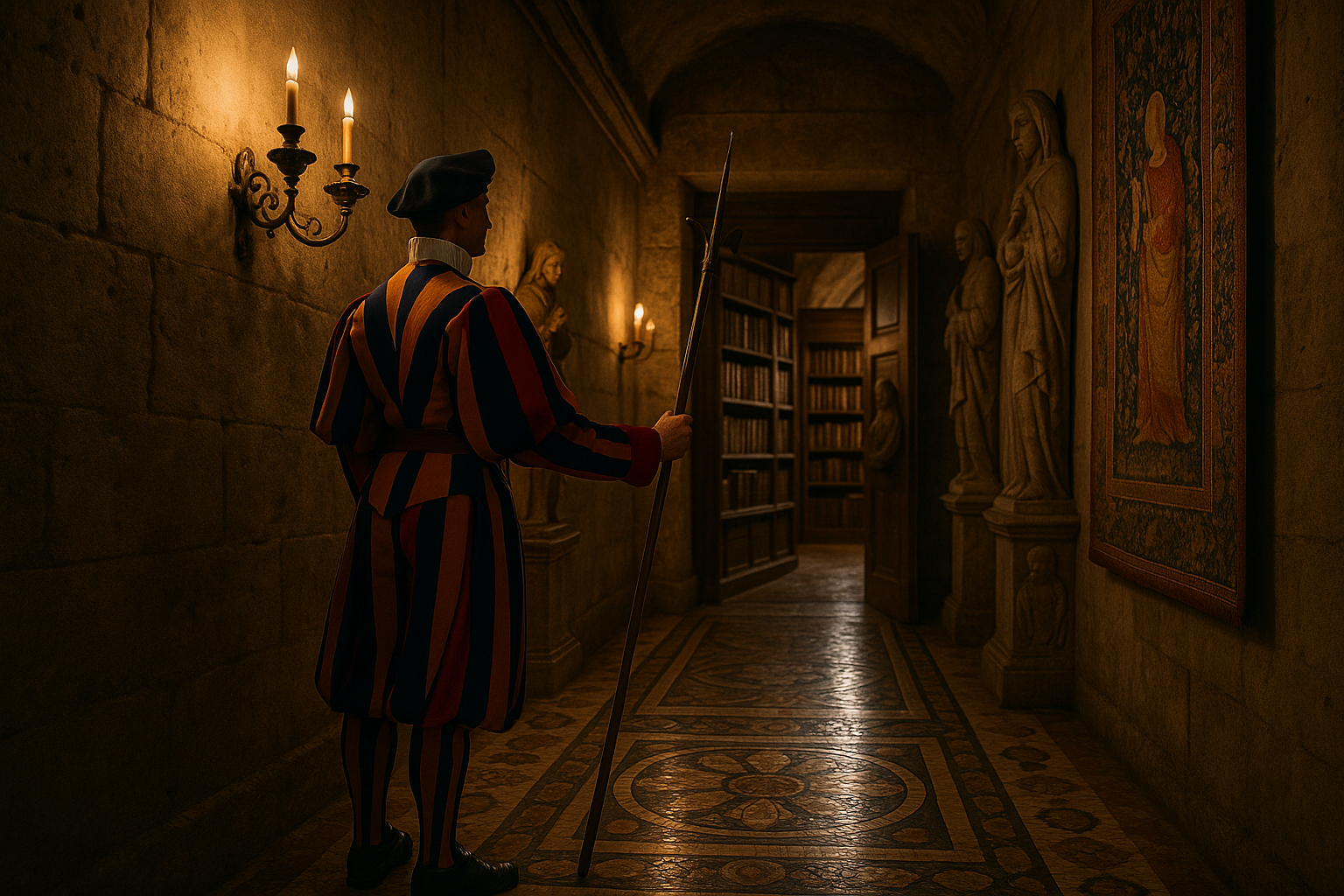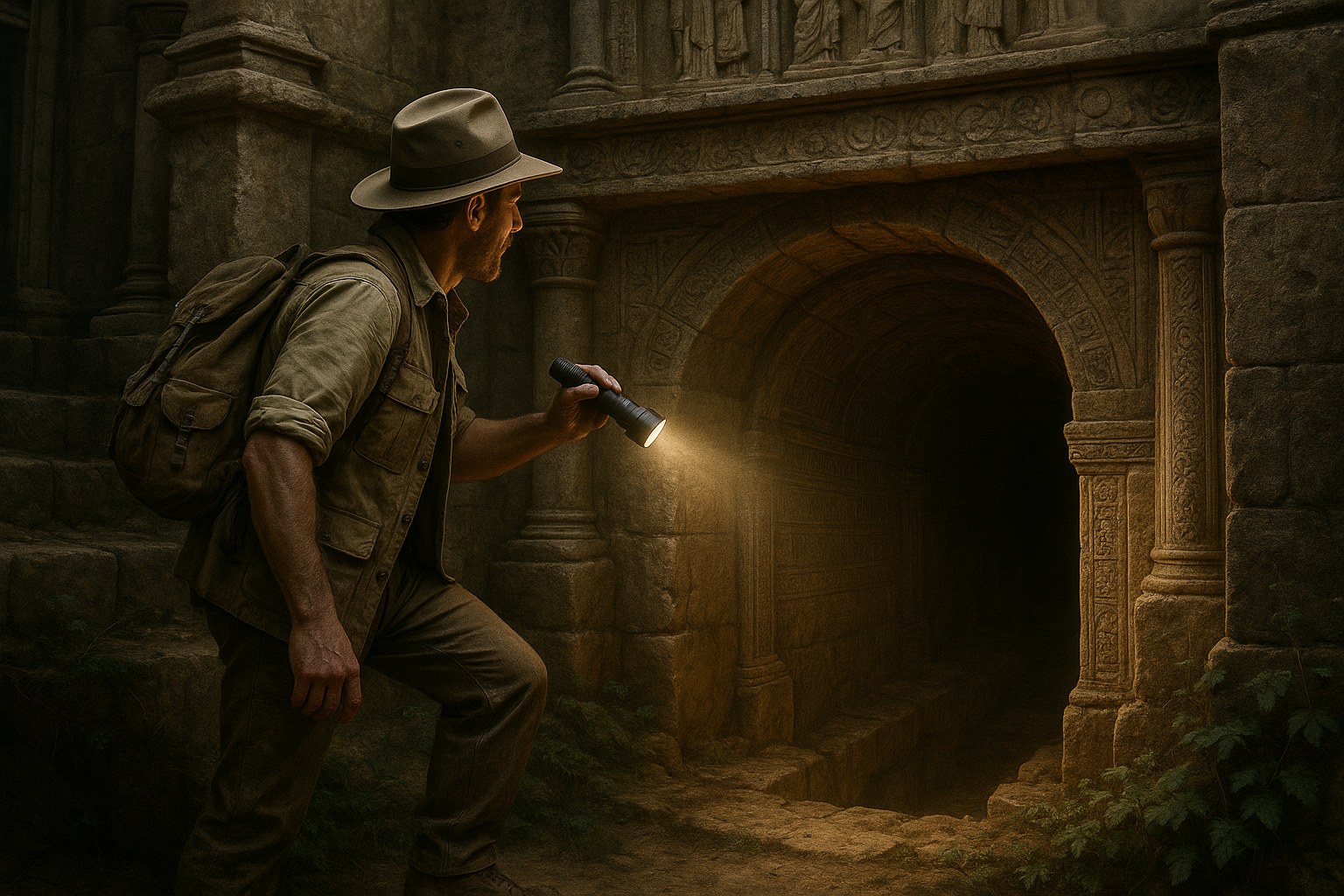In a world dominated by towering skyscrapers, bustling urban centers, and the ceaseless march of technological progress, there exists a silent allure that pulls at the strings of human curiosity—lost cities. These enigmatic remnants of ancient civilizations, often buried beneath layers of earth and time, whisper tales of past glories and mysteries unsolved. From the dense jungles of Central America to the arid deserts of the Middle East, these forgotten metropolises are the beating heart of human history, waiting to be rediscovered. 🌍 As we embark on this captivating journey, we aim to uncover the mysteries of these lost cities through the lens of modern archaeological endeavors. The tools of today’s researchers, coupled with an insatiable thirst for knowledge, are illuminating the hidden wonders of our past in ways never before imagined.
The story of lost cities is not just one of bricks and stones but of the people who inhabited them—their dreams, their struggles, and their triumphs. Our fascination with these ancient urban landscapes stems from a desire to understand who we are by examining who we once were. Each excavation site serves as a portal to another era, revealing intricate societal structures, technological advancements, and cultural achievements that continue to influence the modern world. With every unearthed artifact, we piece together the puzzle of human civilization, gaining insights into the evolution of societies and the factors that led to their eventual decline or abandonment.
In this article, we will journey through some of the most intriguing lost cities that modern excavations have brought back into the spotlight. We will explore the mythical city of Atlantis, whose legendary tales have inspired countless quests and scholarly debates. Next, we will delve into the mysteries of Pompeii, a city frozen in time by the catastrophic eruption of Mount Vesuvius, offering an unparalleled snapshot of Roman life. We’ll traverse the sprawling remains of Angkor in Cambodia, whose majestic temples and advanced water management systems speak volumes of the Khmer Empire’s ingenuity. And, we will not forget the lesser-known, yet equally fascinating, sites such as the sunken city of Dwarka in India and the recently discovered ruins beneath Guatemala’s dense canopies.
But this journey is not just about the past; it’s about the cutting-edge techniques and technologies that have revolutionized archaeology. The days of dusty brushes and rudimentary tools have evolved into a world of lidar scans, ground-penetrating radar, and digital reconstructions. These advancements have not only accelerated the pace of discovery but have also opened up new frontiers in understanding ancient urbanism and its impact on contemporary cities. We’ll delve into how these technologies are being used to unlock secrets that have eluded traditional archaeological methods and discuss the ethical considerations that arise as we strive to balance preservation with exploration.
As we traverse through these ancient wonders, we invite you to ponder the transient nature of human achievement and the indelible marks left behind by civilizations long gone. What lessons can we learn from their stories? How can these tales of resilience, innovation, and sometimes caution guide us in shaping a sustainable future? Join us in uncovering the mysteries of lost cities and let the echoes of the past inspire a new appreciation for the intricate tapestry of human history. 🏛️ Through the eyes of modern science and the spirit of discovery, we will illuminate the shadows of these bygone eras, revealing not just the cities themselves, but the enduring human spirit that built them.
The Fascination with Lost Cities
The allure of lost cities has captivated human imagination for centuries. These cities, often buried under centuries of dirt and mystery, offer a tantalizing glimpse into the past. From the legendary Atlantis to the hidden city of Machu Picchu, these ancient metropolises hold the secrets of ancient civilizations, their triumphs, tragedies, and the inevitable passage of time. With modern technology and excavation techniques, archaeologists are unearthing these long-lost wonders, providing insights that reshape our understanding of history.
The romance of lost cities is deeply embedded in our culture. They are often depicted in literature and film as mystical places filled with treasures and ancient knowledge. However, the reality of these cities is often more complex and intriguing. They were once bustling centers of commerce, culture, and governance, home to thousands of people who lived, worked, and died within their walls. The reasons for their abandonment are varied and can include natural disasters, invasions, or economic decline. Uncovering these reasons is part of the thrill and challenge of modern archaeology.
Recent excavations have brought to light several lost cities, revealing the richness of cultures that once thrived. These discoveries are not just about uncovering ancient ruins; they are about piecing together the stories of the people who lived there. Advanced technologies like satellite imagery, ground-penetrating radar, and LiDAR have revolutionized the way archaeologists locate and study these sites. For instance, the use of LiDAR has uncovered extensive networks of cities in the jungles of Guatemala, previously thought to be uninhabited. The study of lost cities is not merely about the past; it is about understanding the human journey and the societal factors that lead to the rise and fall of civilizations.
Modern Excavation Techniques
The techniques used in modern archaeology have advanced dramatically, allowing researchers to uncover hidden wonders with unprecedented precision. The integration of technology in archaeology has enabled the discovery of structures and artifacts without the need for invasive digging, preserving the integrity of the sites for future study. Technologies such as 3D scanning and virtual reality offer immersive experiences, enabling historians and enthusiasts alike to explore these ancient sites as they once were.
Ground-penetrating radar (GPR) is a non-invasive method that uses radar pulses to image the subsurface. This technique is particularly useful in detecting and mapping archaeological artifacts, features, and structures. GPR has been instrumental in uncovering the layout of lost cities buried beneath urban areas, offering a glimpse into how these cities were structured and how their inhabitants lived.
LiDAR, or Light Detection and Ranging, is another revolutionary tool. It uses laser beams to scan large areas, creating detailed topographical maps that reveal ancient city layouts previously hidden by dense vegetation or the passage of time. The discovery of a vast network of Mayan cities using LiDAR technology has provided a new understanding of the complexity and sophistication of this ancient civilization. The use of these technologies has opened new avenues for archaeological research, enabling discoveries that were once thought impossible.
Notable Discoveries and Their Impact
Recent excavations have unveiled a host of new information about lost cities, reshaping our understanding of ancient civilizations. One notable discovery is the lost city of Heracleion, submerged off the coast of Egypt. Once a thriving port city, Heracleion was a hub of commerce and culture until it sank into the Mediterranean Sea over a thousand years ago. The discovery of Heracleion has provided valuable insights into the trade networks and cultural exchanges of ancient Egypt.
The ancient city of Pompeii, buried under volcanic ash from Mount Vesuvius in 79 AD, is another significant site. The ash preserved the city remarkably well, offering an unprecedented look into Roman life. Recent excavations have unearthed new sections of the city, revealing frescos, buildings, and artifacts that provide a deeper understanding of Roman society and its demise.
| City | Location | Significance |
|---|---|---|
| Heracleion | Off the coast of Egypt | Trade hub in ancient Egypt |
| Pompeii | Italy | Preserved Roman city |
| Machu Picchu | Peru | Inca citadel |
The Role of Technology in Archaeology
In recent years, technology has played a crucial role in the field of archaeology, revolutionizing the way researchers discover and study ancient sites. The integration of digital tools and methods has not only increased the efficiency of archaeological excavations but has also minimized the impact on the sites themselves. Technologies such as drones, 3D printing, and digital modeling are becoming indispensable in uncovering the secrets of lost cities.
Drones, for example, provide aerial views of excavation sites, enabling archaeologists to map large areas quickly and accurately. These aerial perspectives can reveal structures and patterns not visible from the ground, offering new insights into the layout and organization of ancient cities. In addition to mapping, drones are used to capture high-resolution images and videos that can be analyzed to identify areas of interest for further investigation.
3D printing and digital modeling allow researchers to recreate artifacts and structures in a virtual environment. This technology is particularly valuable for preserving delicate artifacts that may not survive traditional excavation methods. By creating digital replicas, archaeologists can study these items in detail and share their findings with a global audience. This approach not only enhances the study of lost cities but also ensures that future generations have access to these cultural treasures.
The Ethics of Excavation
The excavation of lost cities is not without its ethical considerations. Archaeologists must balance the desire for discovery with the responsibility to preserve and protect cultural heritage. This involves careful planning and collaboration with local communities and governments to ensure that the benefits of excavation are shared equitably and that the sites are protected for future generations.
One of the primary ethical concerns in archaeology is the potential for looting and the illegal trade of artifacts. Lost cities are often rich in valuable items that can be exploited for profit, leading to the destruction of sites and the loss of cultural heritage. Archaeologists work closely with local authorities to secure sites and prevent illegal activities, but the demand for ancient artifacts remains a significant challenge.
Furthermore, the excavation of lost cities often requires the displacement of modern communities living near or on top of these sites. Archaeologists must work with these communities to ensure that their rights and needs are respected, and that they are included in the decision-making process. This collaborative approach helps to build trust and ensure the long-term preservation of archaeological sites.
Challenges and Future Directions
Despite the advancements in technology and methodology, the excavation of lost cities presents numerous challenges. Many sites are located in remote or inaccessible areas, requiring significant resources and logistical planning to reach. Additionally, the preservation of artifacts and structures is a continuous challenge, as exposure to the elements can cause irreversible damage.
The future of archaeology lies in the development of more sustainable and inclusive practices. As researchers continue to uncover lost cities, there is a growing emphasis on involving local communities in the process and ensuring that the benefits of these discoveries are shared equitably. This includes creating opportunities for education and economic development, as well as fostering a deeper understanding and appreciation for cultural heritage.
- Explore the use of LiDAR in archaeology
- Discover the history of Heracleion
- Understand the ethical considerations in excavation
To delve deeper into the world of lost cities, watch this insightful video: Uncovering Ancient Secrets: The Lost City of Heracleion.

Conclusion
In conclusion, the exploration and excavation of lost cities have consistently captivated the human imagination, revealing the rich tapestry of our shared past. Throughout this article, we have journeyed through the awe-inspiring discoveries that modern archaeology has unearthed, illustrating how these ancient civilizations continue to shape our understanding of history, culture, and human resilience. From the enigmatic ruins of Machu Picchu to the submerged wonders of Dwarka, each discovery serves as a poignant reminder of the innovative spirit and enduring legacy of those who came before us.
The article began by delving into the technological advancements that have revolutionized archaeological methods. With the advent of technologies like LiDAR, satellite imagery, and ground-penetrating radar, archaeologists can now peer beneath dense jungles and shifting sands to uncover cities that have long been hidden from view. These tools not only enhance the precision and efficiency of excavations but also minimize damage to these invaluable sites. The incorporation of technology underscores a significant shift in archaeology, highlighting how interdisciplinary approaches can lead to groundbreaking findings and preserve our cultural heritage for future generations.
We then explored several case studies of notable lost cities, each with its own unique story to tell. The lost city of Petra, with its stunning rock-cut architecture, offers insights into the Nabataean civilization’s ingenuity and trade networks. Similarly, the city of Pompeii stands as a poignant testament to the fragility of life, frozen in time by the eruption of Mount Vesuvius. These sites, among others, serve as open-air museums, inviting visitors and researchers alike to walk through history and engage with the past in a tactile, immersive manner.
Moreover, the discussion touched upon the socio-political implications of these discoveries. Unveiling the mysteries of lost cities often challenges existing historical narratives, prompting a reevaluation of cultural histories and international relations. The retrieval of artifacts and the ethical considerations surrounding their repatriation are crucial topics that demand ongoing dialogue and cooperation between nations. This aspect of archaeology not only enriches our understanding of history but also fosters global connections and appreciation for diverse cultural heritages.
The preservation and conservation of these sites emerged as a critical theme in the article. As climate change and urban development pose increasing threats to archaeological sites, the urgency to protect these windows into the past has never been greater. Efforts to safeguard these locations are crucial, not just for maintaining academic and historical records but also for honoring the ancestral knowledge and achievements they embody. The participation of local communities in preservation initiatives further emphasizes the importance of inclusive practices in archaeological work.
In reflecting on these points, it becomes clear that the study of lost cities transcends mere academic interest; it is a pursuit that enriches our collective identity and informs our contemporary society. By understanding the successes and failures of past civilizations, we gain invaluable insights into our own trajectories and potential futures. These archaeological endeavors remind us that while empires may rise and fall, the stories they leave behind continue to inspire and educate generations.
As we conclude this exploration into the mysteries of lost cities, it is vital to recognize the importance of continued support for archaeological research and conservation efforts. Readers are encouraged to delve deeper into this fascinating field, whether through visiting archaeological sites, supporting preservation initiatives, or engaging with academic literature. By fostering a broader appreciation for these ancient wonders, we contribute to a more nuanced understanding of our world and our place within it.
We invite you to share this article with others who might be intrigued by the secrets of the past. Engage in discussions that highlight the intersections between history, technology, and culture. Together, let’s celebrate the marvels of ancient civilizations and ensure their stories remain vibrant and relevant in our modern age. 🌍
For further exploration, consider visiting reputable sources such as the Smithsonian Institution, the British Museum, and National Geographic for the latest in archaeological research and discoveries. These resources offer a wealth of information for those eager to learn more about the fascinating world of lost cities and their enduring legacy.
By continuing to uncover and learn from these hidden wonders of the past, we not only honor the ingenuity and resilience of ancient civilizations but also enrich our own cultural and intellectual landscapes. The journey of discovery is never-ending, and each new revelation brings us closer to a deeper understanding of humanity’s incredible history. Let us remain curious, informed, and inspired as we look to the past to guide our future.
Toni Santos is a visual storyteller and artisan whose work explores the quiet power of what lies beneath. With a deep fascination for subterranean and hidden architecture, Toni uncovers the layers, voids, and forgotten spaces that shape our built environment from the shadows.
His art is a journey through the unseen — from ancient underground chambers to sealed passageways, service tunnels, and foundations buried in time. Each creation tells a story of silence, secrecy, and structure — revealing how absence and concealment can be just as meaningful as what’s visible above ground.
Whether working through visual compositions, architectural studies, or symbolic handcrafted pieces, Toni captures the soul of hidden spaces. His work bridges art and archaeology, blending design with discovery. Trained in visual design and traditional techniques, Toni creates with intention. His pieces don’t just depict — they interpret, inviting viewers to rethink what space, memory, and architecture mean when they’re hidden from view.
As the creative force behind Vizevex, Toni shares this perspective through curated visual narratives, symbolic collections, and interpretive essays that give voice to the quiet geometries beneath our feet.
His work is a tribute to:
The mystery of spaces built to be forgotten
The symbolism embedded in foundations, voids, and passageways
The timeless connection between human intention and hidden structure
Whether you’re an artist, an urban explorer, or someone fascinated by the unseen frameworks that support our world, Toni invites you into a realm where architecture becomes myth — one corridor, one layer, one buried story at a time.





